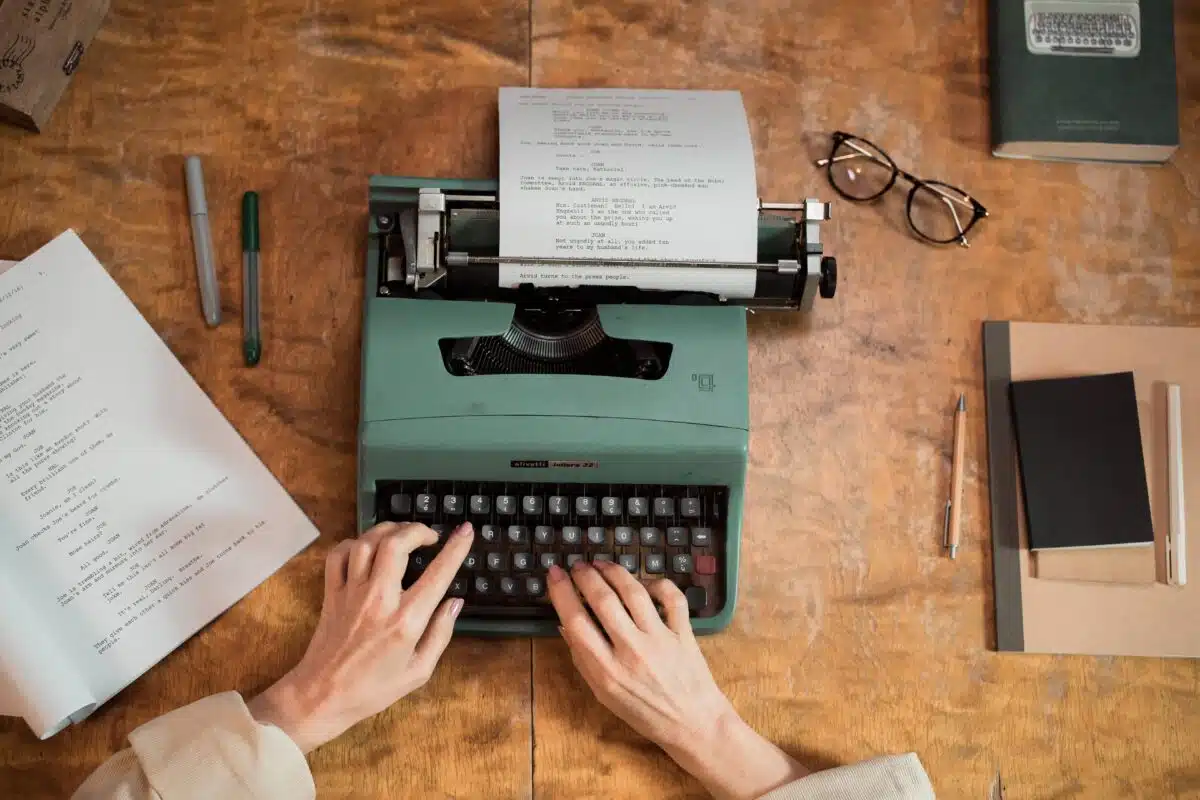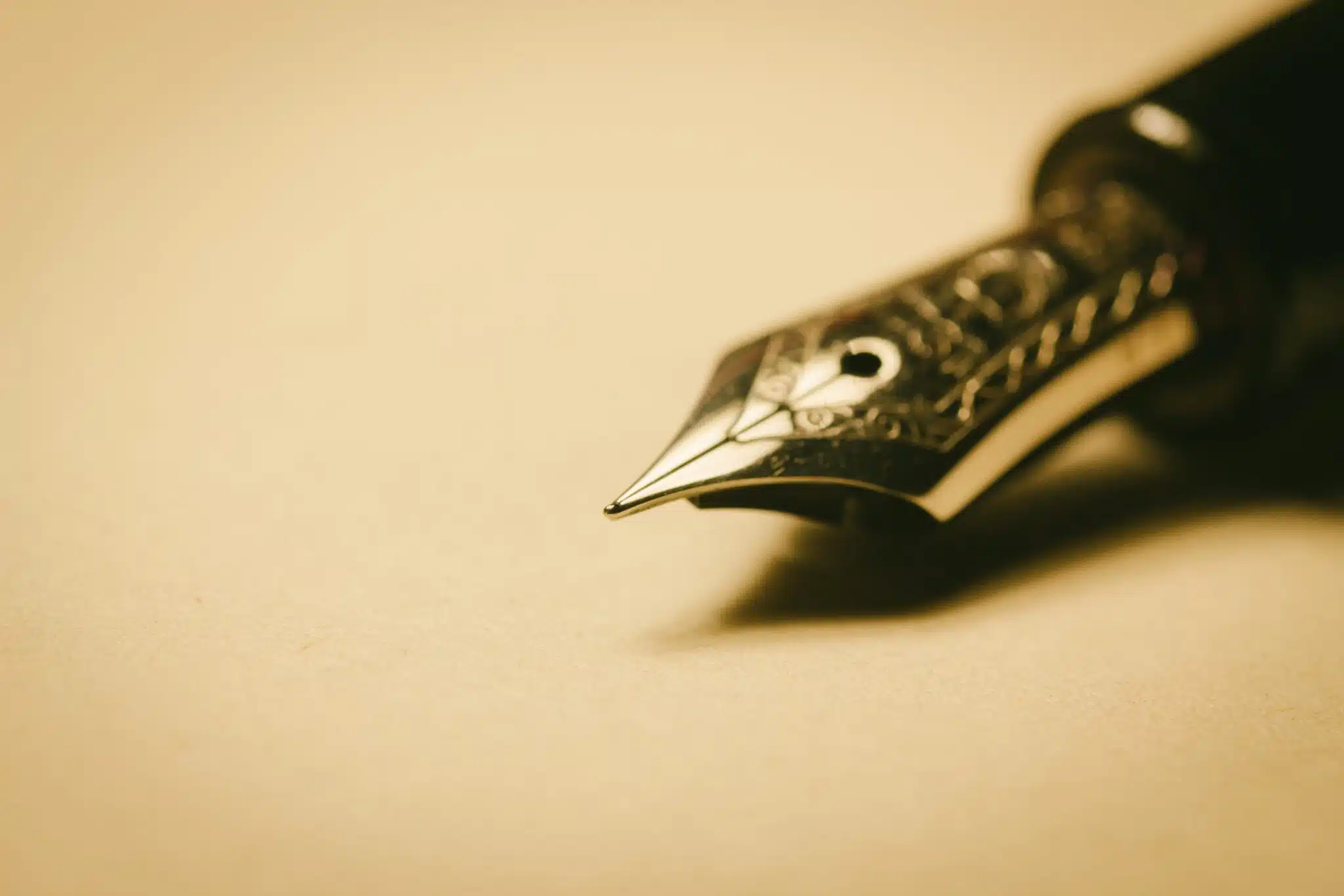Here’s what the Mimic poetry form is:
A mimic poem, otherwise known as an imitation poem, is a poem purposely written in the style of another writer, often copying rhythm, meter, and even core elements of the subject matter.
It’s important to credit the writer of the original and clarify that your poem is an imitation if writing one for publication.
So if you want to learn all about the Mimic poetry type, then you’ve come to the right place.
Let’s get straight to it!
- Epyllion Poetry Form: Sculpt Grand Tales
- Epithalamion Poetry Form: Ignite Love’s Triumph
- Anagrammatic Poetry Form: Puzzle Your Thoughts
- Patchwork Poetry Form: Stitch Words of Wonder
- Cento Poetry Form: Inspire With Melodic Blend

Forms of Poetry: The Mimic Poem

The mimic poem, or imitation poem, is a poem purposely designed to copy the style and rhythm of another poem or poet.
While the name sounds rather unflattering, it’s important to remember that humans do learn primarily through imitation.
A mimic poem is not necessarily written to ape someone else’s style, nor to parody their work, though it can do both of these things in some cases.
Instead, the main goal of a mimic poem (usually) is to either pay homage to the work of the original poet or to learn from imitating their work.
Copying another poet’s style diligently enough can result in unlocking some of the secrets that makes that style tick, and can further one’s own poetic abilities, if done with purpose.
A writer imitating the works of Edgar Allan Poe, for example, might gradually expand their vocabulary as they try to keep up with his dense descriptions and somber portrayals of unusual settings and events.
Meanwhile, a writer imitating the sonnets of William Shakespeare might master iambic pentameter and memorize the rhyme scheme of the English sonnet.
Of course, not all mimic poems are noble.
While writing an imitation as a learning exercise is wonderful, there are a great many imitations that were written with less pure intent.
Imitation can be used to mock the original poet, or even to try to copy their market success (usually to no avail, obviously).
As a result, describing a poem as “an imitation” may still be considered an insult more often than not.
Basic Properties of an Imitation Poem

| Rhyme Structure | Usually copies the original |
| Meter | Usually copies the original |
| Origin | As old as written poetry |
| Popularity | Popular on a global scale; especially in the modern era where parody is nearly its own art form |
| Theme | Varies; may copy or subvert the original’s theme(s) |
Imitation as a Learning Experience

Before a mimic poem even can be written, the writer must examine the original work they’re going to be imitating in great detail.
This doesn’t necessarily need to include a full background check on the original author’s life story and criminal records, though that may be entertaining in some cases, but will usually consist of breaking down the poem into its constituent parts.
Writers have a particular process in mind when it comes to breaking down formal poems in particular called “scansion.”
Scansion is the art of going line by line and marking out the stressed and unstressed syllables, counting how many syllables are on each line, finding the end rhymes that match, etc.
Depending on the poem, this process may reveal the underlying patterns.
It should be noted that even if you think you know your favorite poem inside and out, it’s still worth cutting it apart in this way when trying to imitate it, just to be safe.
You may find that the poet has a habit of ending each line with an anapest, or that they routinely rhyme the second and fifth lines of each verse, for example.
Poets often have very specific purposes in mind for the mechanical quirks of their poetry, so it’s important to look for what it is that makes their poetry tick on a structural level.
You may gain an appreciation for just how much work went into the poetry.
As an example, Dr. Seuss (Theodore Seuss Geisel), still has a great many fans and admirers to this day and his children’s books will undoubtedly be enshrined in history as some of the most influential of the past century.
But did you know that his most popular books primarily used anapestic tetrameter?
Or that he had a habit of breaking the meter at carefully calculated moments to make the poems sound more natural?
Imitating a poem may make elements like this that are just bubbling under the surface come to light.
You may try to come up with your own version of a metaphor and discover that there was a very particular reason that a certain line was written the way it was.
This, ultimately, is what a well-executed imitation is trying to do.
It’s trying to understand the reasons behind the decisions the writer made while writing.
To get inside their head, if you will.
Imitation as Parody

While imitations can be written to learn, they can also be written in jest.
This isn’t necessarily a bad thing and doesn’t need to be malicious, though it certainly can be.
For a positive example, think of the works of Weird Al Yankovic, who founded an entire career on performing parodies of various pop songs.
Despite being known as primarily a comedic singer who doesn’t take himself too seriously, Weird Al has been wildly successful and is well-loved by the musical community.
This is because his works aren’t meant to be insulting or derivative.
He’s just doing what he enjoys doing and embracing it.
This is the right way to write parody.
A less impressive way to write parody would be to twist the writing into something it was never meant to be.
You could, in theory, write a fake speech in the style of the Gettysburg Address that mocks soldiers instead of honoring them.
It wouldn’t end well for you or your career, and I would feel little to no remorse for whatever happens to you, but that is another way to handle imitation, albeit poorly.
The bottom line when it comes to parody is that there’s a thin line between being funny and being overly offensive.
Being cognizant of the moral codes and latent power imbued within language is a sign that you’re maturing as a writer, and learning to never twist language toward malicious means is a step in the right direction for everyone involved.
I’m not saying you can’t add a toilet joke to a poignant reimagining of Robert Frost’s Fire and Ice, of course.
Please do.
There are different kinds of ‘offensive’ and you’ll have to learn to navigate those lines on your own.
Imitation as Plagiarism

We cannot ignore the elephant in the room.
If your imitation is not deftly handled, it can become plagiarism.
Perhaps not even intentionally.
You are ultimately copying the style of another writer and need to be acutely aware of their intellectual rights and sense of ownership.
Even if you’re just copying the structural elements, it can be wise to add the byline “a mimic poem of [insert original poem’s title and author].”
This is a way to declare to the world that you are not claiming to have come up with this style yourself.
It seems small, but it matters.
There is a line that’s always dangerous to cross, however, even when crediting their name.
While copying style, subject, and meter is one thing, copying and pasting is another thing entirely.
Someone else’s exact words and phrases have no business being in your poem.
The exception would be in a literary collage, which would handle the crediting carefully and specifically clarify that it’s a collage (a mixing and matching of the work of others).
If you’re ever uncertain of where your work stands in terms of ethics and copyright law, try reaching out to the original writer and asking them how they would feel if you published your poem.
With enough experience, that step won’t necessarily be mandatory as you’ll learn to differentiate between what is and what is not plagiarism.
But I have noticed that a great many novice writers, and especially those from countries where plagiarism is a relatively new concept, struggle with understanding where the boundaries are exactly.
Example of Mimic Poetry

That Old Wheelbarrow
(imitating “The Red Wheelbarrow” by William Carlos Williams)
so many people
ponder
that old wheel
barrow
blazing a trail
forward
toward some bored
students
The above example is a simple mimicry of a poem that seemed to go absolutely viral for a time, “The Red Wheelbarrow.”
The structure of the original poem is unbelievably simple.
Just sixteen words divided into four sets of four, with a little alliteration and assonance to spice things up.
There was no rhyme structure nor particular meter associated with the original, though the first line was iambic (probably by coincidence).
Nonetheless, it became extremely popular for a sense of hidden depth bubbling just underneath the seeming simplicity of the poem.
Ultimately this probably only stems from the question, “What is it that depends upon the wheelbarrow?” but it caught the attention of scholars everywhere.
As a result, the poem quickly spread through college poetry courses like wildfire, with each class trying to put their own unique spin on what “The Red Wheelbarrow” means.

This imitation is just a fun little spoof on that, purposely referencing the original poem and joking about how it’s charging forward “toward some bored students.”
Note that even with such a simple poem, there were important structural elements that you would need to copy.
Even if there had been no mention of a wheelbarrow in the poem, professionals still would have realized this was an imitation from the lack of punctuation, very specific format of the lines, iambic first line, and the instances of alliteration and assonance purposely added to the poem to seal the deal.
While this poem is only a friendly joke, it would have come off as much more disrespectful if I had not purposely made an effort to pay homage to the original style of “The Red Wheelbarrow.”
Ultimately, William Carlos Williams just wanted to write a good poem, so an imitation of his work should do its best to respect that simple intent.
It’s not his fault one of his simplest poems just happened to go viral, after all.
Tips for Writing an Imitation Poem

Firstly, if you’ll be imitating a poem with a specific form (sonnet, haiku, etc.), then you need to learn how that structure is meant to work.
You should actually learn the rules separately from the poem you’ll be studying, so that you can recognize any moments in which the writer purposely breaks those rules.
If they do, ask yourself why they would choose to break the form when and where they did.
Second, try to master scansion as a practical exercise.
Scan a popular poem first and compare your notes with professional scans of the poem online to see how close you were.
I personally wouldn’t want to proceed until I’m getting things about 90% right, more or less, but that’s just me.
There’s no harm in letting your first imitation be flawed, especially if you’ll be the only one to see it.
Third, think carefully about theming.
Choosing a subject or theme that’s adjacent to or in direct contrast to the original poem may help to make the comparisons easier for your target audience (or even yourself) to make.
It’s much easier to see your mistakes when the subject matter mirrors the original in some ways.
While imitation is supposedly “the sincerest form of flattery,” that does not give you free reign to use it however you please.
The first step toward a good imitation is trying to put yourself in the shoes of the original writer.

If it’s a parody, would it offend them or would they be laughing along with you?
Does your work come a little too close to the sun, potentially infringing on their intellectual rights?
You need to understand whether or not your poem is safe for publication, both emotionally and legally, before pursuing it any further than just as a learning experience.
For most students, writing their first imitation poem probably won’t strike a particularly meaningful chord with them.
We’re not all meant to passionately pursue the life of a writer and a poet, naturally.
Heck, if there were that many talented writers, I’d probably be out of a job.
However, for those students that are interested in picking up the pen and furthering their understanding of the world through poetry and prose, mimicking the works of their favorite writers is an unforgettable feeling.
English teachers and professors love to say that literature is “an ongoing conversation” or some such drivel, and this feeling of participation might be the closest you ever get to understanding what that drivel means.
So I do encourage you to write a mimic poem if you’ve never done so.
Choose your favorite poem, even if no one else has heard of it.
Your poem doesn’t need to be perfect.
It certainly won’t be better than the original, or at least I hope not (for the original writer’s sake), but it will be interesting.
It will be unlike any experience you’ve had before with writing.
Poet’s Note

As a learning experience, imitation poems are invaluable.
One of the earliest poems I can specifically remember writing was actually an imitation poem, for an English class in middle or high school (can’t remember which).
And although it wasn’t the first poem I ever wrote, I do think it was an important experience in my backlog.
It gave me a chance to reexamine one of my favorite writers and rethink one of his best and most famous poems as if I’d been the writer.
Comprehensive Collection of Poetry Forms: Craft Words Into Art

Dare to traverse the entire spectrum of poetic forms, from the commonplace to the extraordinary?
Venture from the quintessential Sonnet to the elusive Mistress Bradstreet stanza, right through to the daunting complexity of Cro Cumaisc Etir Casbairdni Ocus Lethrannaigecht.
For those with a zeal to encounter the full breadth of poetry’s forms, this invitation is yours.
Start exploring the vast universe of poetic ingenuity with our comprehensive array of poetry forms right now!
